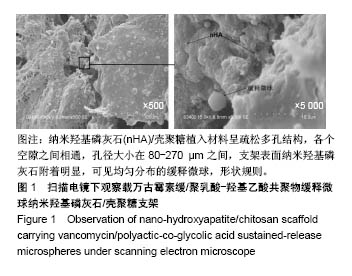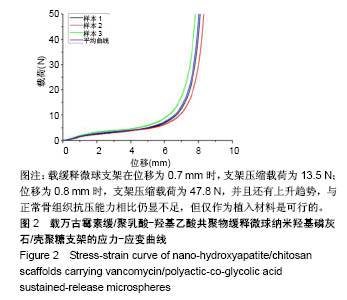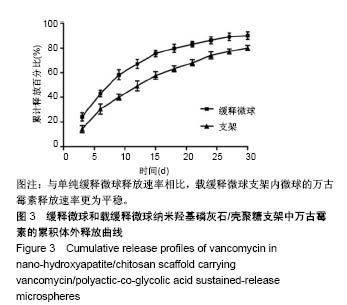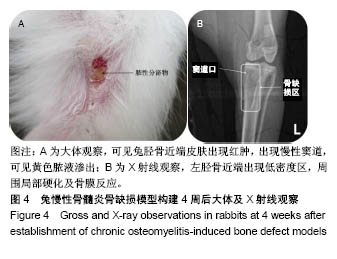| [1] Dhanireddy S, Neme S. 44–Acute and Chronic Osteomyelitis. Infect Dis. 2017;1:388-398. [2] Winkler H, Haiden P. Treatment of Chronic Bone Infection. Oper Tech Orthop. 2016;26(1):2-11. [3] Ning L, Malmstrom H, Ren YF. Porous Collagen-Hydroxyapatite Scaffolds With Mesenchymal Stem Cells for Bone Regeneration. J Oral Implantol. 2015;41(1):45-49. [4] David F, Levingstone TJ, Schneeweiss W, et al. Enhanced bone healing using collagen–hydroxyapatite scaffold implantation in the treatment of a large multiloculated mandibular aneurysmal bone cyst in a thoroughbred filly. J Tissue Eng Regen Med. 2015;9(10):1193-1199. [5] Gomes D, Pereira M, Bettencourt AF. Osteomyelitis: an overview of antimicrobial therapy. Braz J Pharm Sci. 2013;49(1):13-27. [6] Inzana JA, Schwarz EM, Kates SL, et al. Biomaterials approaches to treating implant-associated osteomyelitis. Biomaterials. 2016;81:58-71. [7] Kaplan SL. Staphylococcus aureus Infections in Children: The Implications of Changing Trends. Pediatrics. 2016;137(4):e20160101. [8] Yang D, Wijenayaka AR, Solomon LB, et al. Novel Insights intoStaphylococcus aureusDeep Bone Infections: the Involvement of Osteocytes. MBio. 2018;9(2). pii: e00415-18.doi:10.1128/mBio. 00415-18. [9] Duszynska W, Taccone FS, Hurkacz M, et al. Continuous vs. intermittent vancomycin therapy for Gram-positive infections not caused by methicillin-resistant Staphylococcus aureus. Minerva Anestesiol. 2016;82(3):284-293. [10] Cao G, Liang X, Zhang J, et al. Vancomycin serum trough concentration vs. clinical outcome in patients with gram-positive infection: a retrospective analysis. J Clin Pharm Ther. 2016;40(6): 640-644. [11] Kadry AA, Al-Suwayeh SA, Abd-Allah AR, et al. Treatment of experimental osteomyelitis by liposomal antibiotics. J Antimicrob Chemother. 2004;54(6):1103-1108. [12] Broussou DC, Lacroix MZ, Toutain PL, et al. Differential Activity of the Combination of Vancomycin and Amikacin on Planktonic vs. Biofilm-Growing Staphylococcus aureus Bacteria in a Hollow Fiber Infection Model. Front Microbiol. 2018;9:572. [13] Marrelli M, Tatullo M. Influence of PRF in the healing of bone and gingival tissues. Clinical and histological evaluations. Eur Rev Med Pharmacol Sci. 2013;17(14):1958-1962. [14] Marrelli M, Falisi G, Apicella A, et al. Behaviour of dental pulp stem cells on different types of innovative mesoporous and nanoporous silicon scaffolds with different functionalizations of the surfaces. J Biol Regul Homeost Agents. 2015;29(4):991-997. [15] Paduano F, Marrelli M, Alom N, et al. Decellularized bone extracellular matrix and human dental pulp stem cells as a construct for bone regeneration. J Biomater Sci Polym Ed. 2017;28(8):730-748. [16] 胡荣康,吴林秀,陈明军,等.不同分子量壳聚糖的制备及其应用研究进展[J].食品工业科技,2017,38(15):324-328.[17] Boukari Y, Qutachi O, Scurr DJ, et al. A dual-application poly (dl-lactic-co-glycolic) acid (PLGA)-chitosan composite scaffold for potential use in bone tissue engineering. J Biomater Sci Polym Ed. 2017;28(16):1966-1983. [18] Shamekhi MA, Rabiee A, Mirzadeh H, et al. Fabrication and characterization of hydrothermal cross-linked chitosan porous scaffolds for cartilage tissue engineering applications. Mater Sci Eng C Mater Biol Appl. 2017;80:532-542. [19] Uswatta SP, Okeke IU, Jayasuriya AC. Injectable porous nano-hydroxyapatite/chitosan/tripolyphosphate scaffolds with improved compressive strength for bone regeneration. Mater Sci Eng C Mater Biol Appl. 2016;69:505-512. [20] Wang XF, Lu PJ, Song Y, et al. Nano hydroxyapatite particles promote osteogenesis in a three-dimensional bio-printing construct consisting of alginate/gelatin/hASCs. Rsc Adv. 2016;6(8):6832-6842. [21] Medeiros JS, Oliveira AM, de Carvalho JO, et al. Nanohydroxyapatite/ Graphene Nanoribbons Nanocomposites Induce in Vitro Osteogenesis and Promote in Vivo Bone Neoformation. Acs Biomater Sci Eng. 2018;4(5). DOI: 10.1021/acsbiomaterials.7b01032[22] Ge S, Zhao N, Wang L, et al. Bone repair by periodontal ligament stem cellseeded nanohydroxyapatite-chitosan scaffold. Int J Nanomedicine. 2012;7:5405-5414. [23] Biazar E, Heidari KS, Tavirani MR, et al. Bone reconstruction in rat calvarial defects by chitosan/hydroxyapatite nanoparticles scaffold loaded with unrestricted somatic stem cells. Artif Cells Nanomed Biotechnol. 2015;43(2):112-116. [24] 杨新明,孟宪勇,张瑛,等.带蒂筋膜瓣包裹自体红骨髓复合体修复骨缺损的疗效[J].中华创伤骨科杂志,2012,14(9):741-747.[25] 邵擎东,李宇飞,许天明,等.自体红骨髓移植治疗鼠胫骨骨不连[J].中华实验外科杂志,2015,32(6):1375-1377.[26] 向柄彦,郭元.载药微球联合BMP-2治疗兔慢性骨髓炎的实验研究[J].重庆医学,2015,44(8):1032-1034.[27] 向柄彦,郭元.载药组织工程支架的构建及其性能研究[J].现代医药卫生, 2015,31(9):1281-1282.[28] 向柄彦,韩小松,陈炎城,等.不同浓度富血小板血浆复合自体红骨髓及纳米骨治疗兔桡骨骨缺损的实验研究[J].现代预防医学, 2012,39(19): 5126-5131.[29] Li Y, Zhang Z, Zhang Z. Porous Chitosan/Nano-Hydroxyapatite Composite Scaffolds Incorporating Simvastatin-Loaded PLGA Microspheres for Bone Repair. Cells Tissues Organs. 2018;205(1):20-31. [30] Norden CW, Myerowitz RL, Keleti E. Experimental osteomyelitis due to Staphylococcus aureus or Pseudomonas aeruginosa: a radiographic- pathological correlative analysis. Br J Exp Pathol. 1980;61(4):451-460. [31] Hatzenbuehler J, Pulling TJ. Diagnosis and management of osteomyelitis. Am Fam Physician. 2011;84(9):1027-1033. [32] Bibbo C, Stough JD. Reduction calcaneoplasty and local muscle rotation flap as a salvage option for calcaneal osteomyelitis with soft tissue defect. J Foot Ankle Surg. 2012;51(3):375-378. [33] 万古霉素临床应用剂量专家组.万古霉素临床应用剂量中国专家共识[J].中华传染病杂志,2012,30(11):641-646.[34] 龙亚周,朱泽兴,于燕,等.万古霉素不同给药途径治疗慢性骨髓炎的研究进展[J].中华外科杂志,2016,54(9):716-720. |
.jpg)







.jpg)